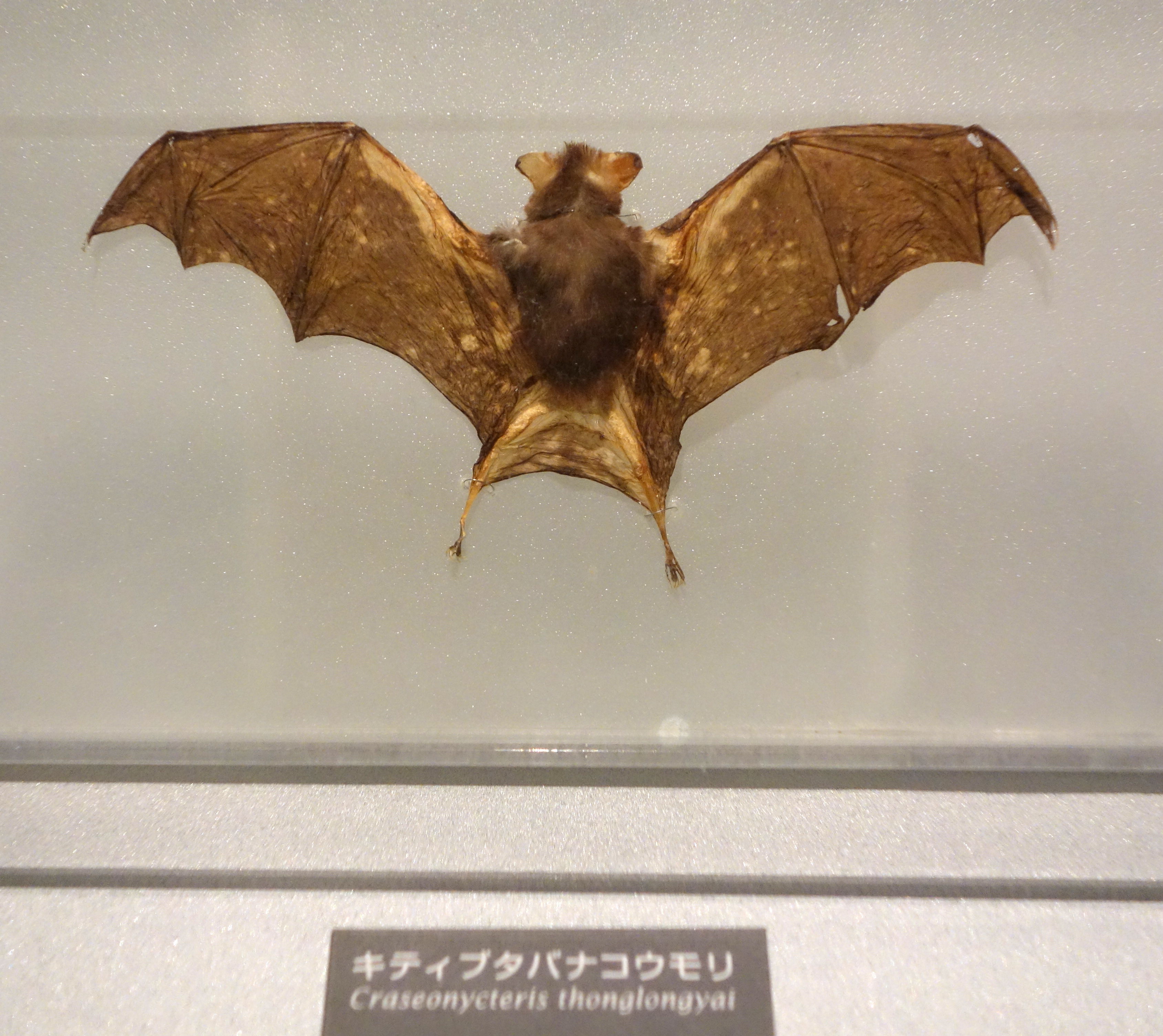| Citation |
|
Description |
Geographic Range [top]
Range Description: This species occurs in Thailand and Myanmar. The type locality in Thailand is Kanchanaburi, Ban Sai Yoke (= Yok), cave near the Forestry Station (1426N, 851E). It potentially occurs further south in Myanmar, a genetic study is being undertaken to determine if the species exists in two isolated subpopulations. There are additional limestone caves near the Thai border in Myanmar although these have not been surveyed. Its elevational range is from 0-500 m asl.
Countries occurrence:
Native:
Myanmar; Thailand
Upper elevation limit (metres): 500
Range Map: Click here to open the map viewer and explore range.
Population [top]
Population: The total population is restricted to eight caves in Myanmar (Pereira et al. 2006) and 35 in Thailand (Yokubo et al. 2005; Redfield, 2006). The population in Thailand is estimated to be 5,100 individuals and the population has decreased. From 1983 to 1997, there has been a 10% decrease while from 1998 to the present a 14% decrease has been estimated. These figures are not based on the same cave samples, as the species disappeared from some caves and appeared in others and it is not known whether this simply reflects colonies moving from one cave to another (S. Bumrungsri pers. comm.) The population in Myanmar is over 1,500 individuals (P. Bates pers. comm.), all age classes are included although this is likely to be represented by mature individuals as the species matures quickly.
Current Population Trend: Decreasing
Additional data:
?Population severely fragmented: No
Habitat and Ecology [top]
Habitat and Ecology: This species is always associated with limestone outcrops near rivers and can survive in degraded areas. It always roosts in caves. Weighing around two grams, this tiny bat is reputedly the worlds smallest mammal. It is insectivorous and normal foraging range appears to be limited to an area of around 1 km from the roost site (Hutson et al. 2001).
Systems: Terrestrial
Threats [top]
Major Threat(s): The species is affected by disturbance of roosts by religious visits, fertilizer collection and tourism - there has been development of show caves (S. Bumrungsri pers. comm.). There is also the potential for the extraction of limestone which would cause habitat destruction.
Conservation Actions [top]
Conservation Actions: There is a need for the protection of the cave roosts. A survey of the limestone caves just across the Thai border inside Myanmar is required to determine if the species occurs there. Education of monks to prevent burning of incense is also required (P. Bates pers. comm.) as well as improvement of transboundary collaboration on conservation of the species along with transboundary information exchange, and identification and establishment of protected areas (P. Bates pers. comm.).
Citation: Bates, P., Bumrungsri, S. & Francis, C. 2008. Craseonycteris thonglongyai. The IUCN Red List of Threatened Species 2008: e.T5481A11205556. http://dx.doi.org/10.2305/IUCN.UK.2008.RLTS.T5481A11205556.en. Downloaded on 08 April 2016.
Disclaimer: To make use of this information, please check the .
Feedback: If you see any errors or have any questions or suggestions on what is shown on this page, please provide us with feedback so that we can correct or extend the information provided |

